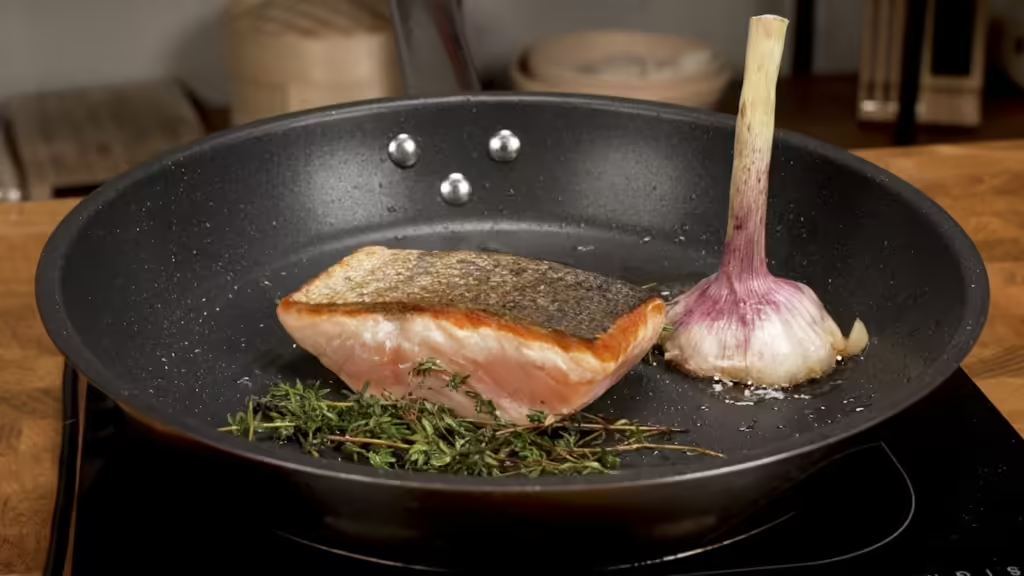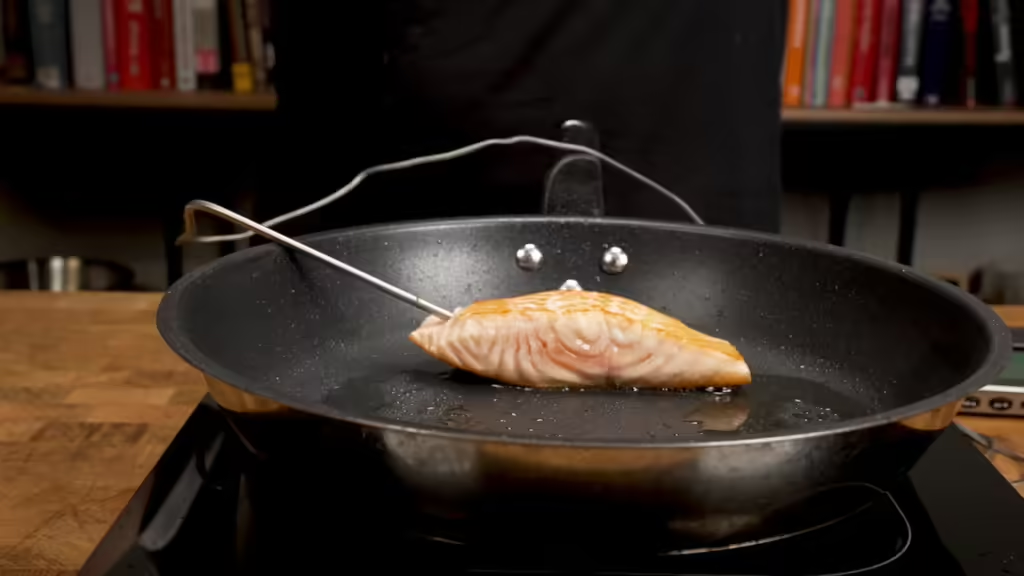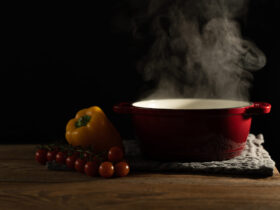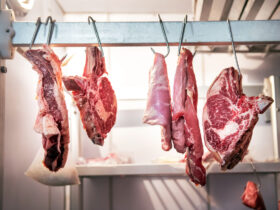Salmon, a staple on many German dinner tables, is beloved for its rich flavor and versatility. Yet, all too often, it arrives on plates overcooked and dry, a far cry from its potential. But fear not! Cooking the perfect salmon is simpler than you might think.

Why is Salmon Red?
Have you ever wondered why salmon boasts its characteristic reddish or orange hue?
The color of salmon fillets ranges from pale orange to pink to deep red. You can discern whether a salmon fillet is wild-caught or farm-raised by its color. In truth, the flesh of all salmon is white to gray. It’s through their diet that the flesh takes on shades of pink, orange, or red.
The natural reddish color in wild salmon comes from their diet. Wild salmon feed on crustaceans like shrimp and lobsters, which contain carotenoids. Carotenoids serve as natural pigments, responsible for the vibrant hues in foods like peppers, tomatoes, and carrots.
But how does this work in farming?
Naturally, farmed salmon aren’t fed shrimp or lobsters. Instead, to achieve that desired orange to pink hue, carotenoids are added to their feed.
There are even color charts to determine the final color of the salmon. Without these added pigments, farmed salmon would simply be white or gray, akin to cod or tilapia.

Fresh Salmon or Frozen?
Do you always opt for fresh fish? Here’s a fact: Frozen fish lasts longer, and there are excellent quality options available.
It’s crucial to note that the fish sold as “fresh” in stores may not always be as fresh as you assume. Some markets transparently indicate whether the fish was previously frozen and merely thawed for sale, along with the catch date.
So, your fish from the fish counter might have been previously frozen and thawed en route to the market.
With frozen fish, it’s typically flash-frozen right after being caught. While fresh fish may spend several days in transit before reaching the market, frozen fish preserves optimal freshness.
Therefore, it’s not as critical whether you buy frozen or fresh salmon; what matters more is the quality you’re purchasing. Personally, I prefer frozen salmon for its immediate freezing, preserving optimal freshness. When making your purchase, prioritize looking for quality seals.

Quality Seals to Watch For:
MSC Seal: The MSC seal denotes sustainable fishing practices, indicating that your fish is wild-caught following criteria for environmentally responsible fishing. It focuses on preserving marine ecosystems and ensuring fish stocks aren’t overexploited.
ASC Seal: The ASC seal signifies sustainable aquaculture practices. Salmon bearing this seal comes from farms meeting stringent environmental and social standards, including reducing environmental impacts, protecting local ecosystems, and ensuring good working conditions.

Salmon Curing:
Enough theory; let’s get practical. One step I always recommend, whether you’re cooking salmon in the oven, on the stovetop, or in a broth, is curing.
Regardless of the fish I’m preparing, I always cure it beforehand. This ensures it retains its moisture and is evenly seasoned throughout.
Start dissolving sugar and salt in the water. Heat the water until the ingredients are fully dissolved.
Cool down the brine and submerge your salmon fillet in the brine for 20 minutes.
Then, remove your salmon fillet from the brine and let it rest in the refrigerator for several hours to allow the cell structure to change.
Curing not only keeps your fish moist but also offers another advantage: it can double the shelf life of your fish fillets, as salted fish inhibits bacterial growth.
Ingredients
Directions
Start dissolving sugar and salt in the water. Heat the water until the ingredients are fully dissolved.
Cool down the brine and submerge your salmon fillet in the brine for 20 minutes.
Then, remove your salmon fillet from the brine and let it rest in the refrigerator for several hours to allow the cell structure to change.
Curing not only keeps your fish moist but also offers another advantage: it can double the shelf life of your fish fillets, as salted fish inhibits bacterial growth.

Salmon Doneness:
Like steak, salmon comes with varying degrees of doneness. Here are the stages of doneness for salmon:
Rare: approximately 45-50°C – At this temperature, the salmon fillet remains slightly raw in the center with a tender texture
Medium Rare: 50-52°C – The fillet is mostly cooked through but retains a slightly raw, juicy core
Medium: 55-60°C – At this core temperature, the salmon is cooked through but remains moist and tender
Medium Well: 60-63°C – The fillet is nearly fully cooked, with just a hint of moisture in the center
Well Done: over 65°C – At this temperature, the salmon is fully cooked but unfortunately tends to be dry.
By mastering these tips and techniques, you’ll elevate your salmon dishes to new heights, impressing even the most discerning palates. Whether you opt for fresh or frozen, wild-caught or farmed, remember that quality is paramount. Happy cooking!














Leave a Reply
View Comments